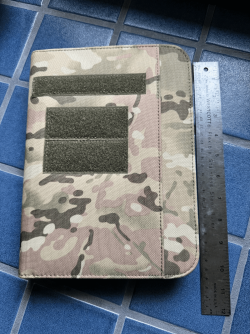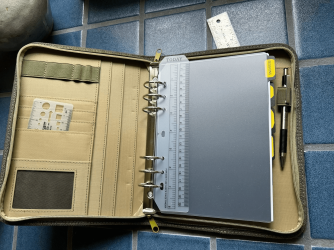I am also making an effort to better organize my record keeping. I don't reload for too many rifles so my transition isn't overly complex. I am converting everything written to the A5 Planner (prox 8.5"x5.5") format and divided into sections: Sessions, DOPE, Reloading (subdivided by cartridge), and barrel life logs. I have spreadsheet templates (some still in the works) that I print on A5 paper so field entry is really easy. Pretty simple to add the field notes to the spreadsheets and save them to the file when I am in front of my laptop after getting back home from a shooting session. If my field notes are too sloppy I can print out a copy of the digital entries and replace the handwritten page in the planner. I take a pic of my targets then process and save them in Hornady Group Analysis.
Now everything is in basically in one field notebook that fits in my range bag and zips closed to keep some of the dust out of it, one firearms folder on my computer, and target records on my iPhone. Only option for the notebook case on Amazon was camo...ha! Matches everything!
Now everything is in basically in one field notebook that fits in my range bag and zips closed to keep some of the dust out of it, one firearms folder on my computer, and target records on my iPhone. Only option for the notebook case on Amazon was camo...ha! Matches everything!


